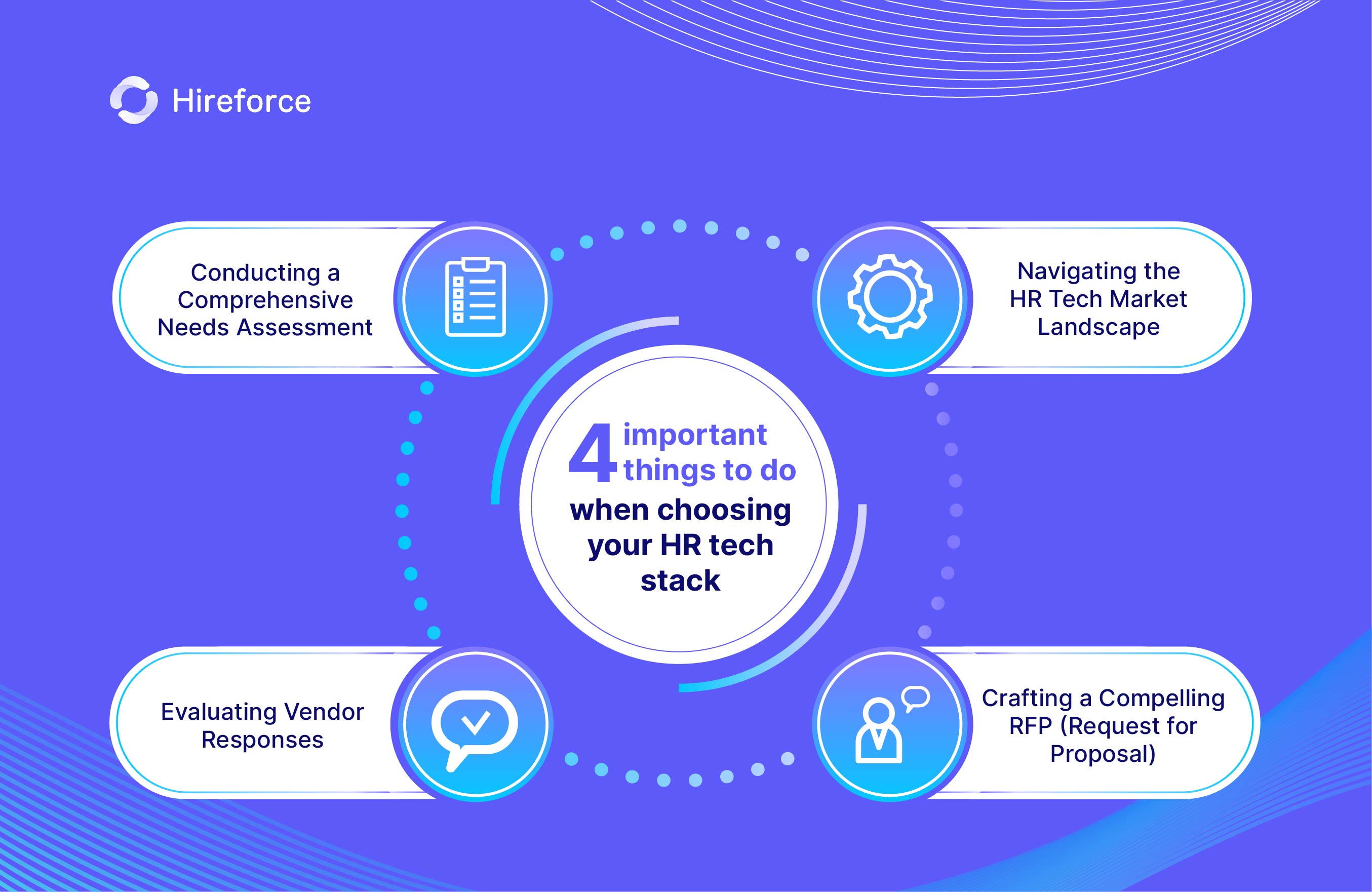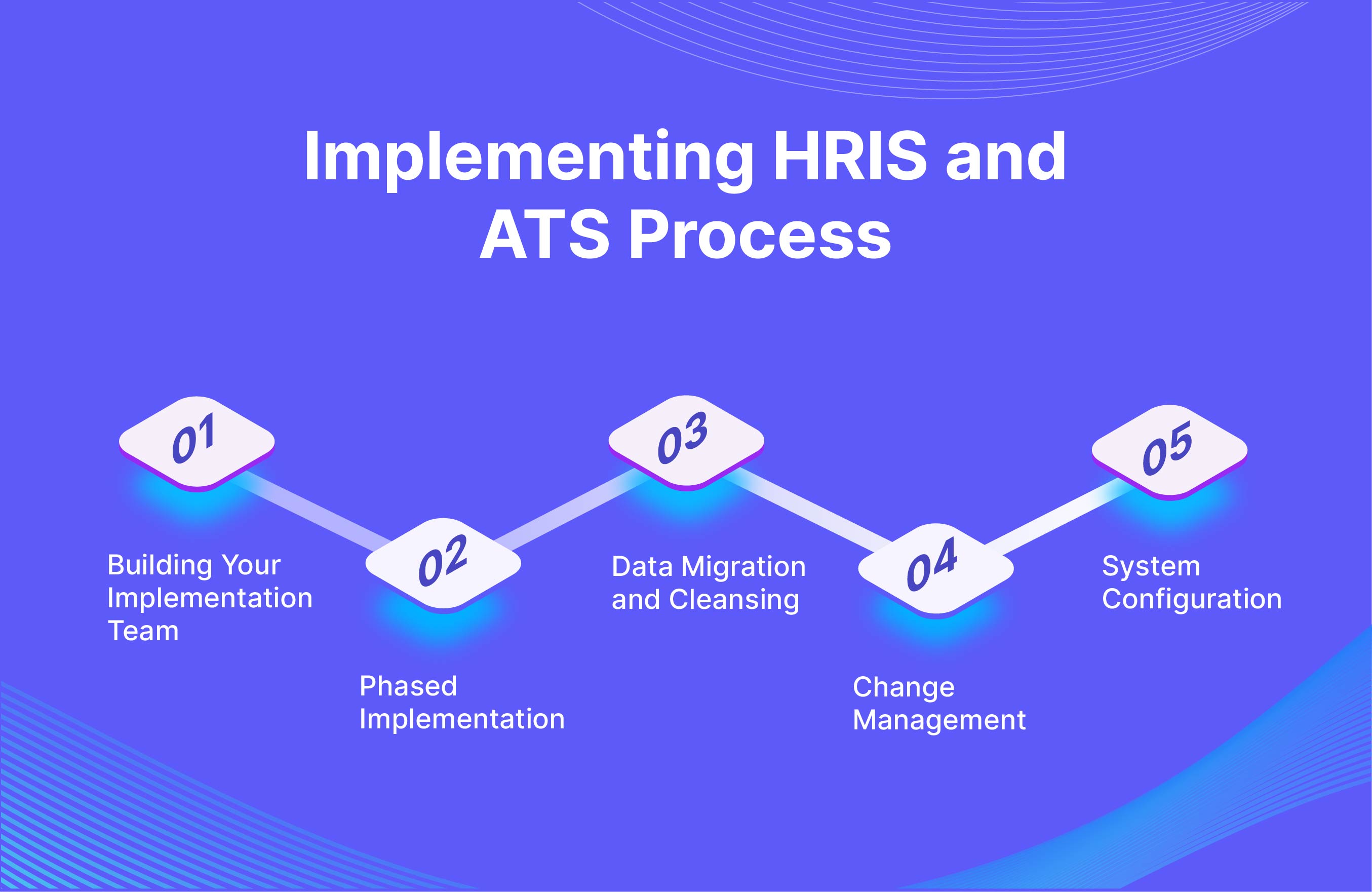The modern workplace is in the throes of a digital revolution, and the Human Resources (HR) department is no exception. Now, HR professionals are empowered by sophisticated technology that streamlines processes, improves decision-making, and ultimately enhances employee experience.
But technology advancement is more than just adopting new software; it's about embracing a strategic mindset that leverages technology to achieve organizational goals. Recent surveys reveal that 88% of HR leaders believe technology is a crucial enabler of HR strategy.
Key tech defining modern HR
HRIS (Human Resource Information Systems): Think of HRIS as the central nervous system of your HR department. It's a comprehensive software suite that manages a wide array of functions, including:
- Employee Data Management: Maintaining accurate records of employee information (personal details, job history, performance reviews, etc.).
- Benefits Administration: Automating enrollment, tracking eligibility, and managing contributions.
- Payroll: Calculating wages, processing deductions, and generating paychecks.
- Time and Attendance: Tracking hours worked, leave requests and absences.
ATS (Applicant Tracking Systems): The talent acquisition landscape is fiercely competitive. ATS platforms are the modern recruiter's secret weapon. They streamline and automate the recruitment process, enabling organizations to:
Enhancing Candidate Experience
With user-friendly applications, you can simplify forms and streamline the submission process, making it more likely candidates will complete their applications. Automated emails keep candidates informed about their status, reducing anxiety and showing that you value their time. Personalized interactions at various stages also make candidates feel respected and appreciated.
Reducing Time to Hire
The most obvious benefit of using an ATS is the time saved when recruiting for the same position across multiple platforms and tools. Switching back and forth between these platforms is time-consuming, especially when managing many positions. Additionally, tracking, searching for, and communicating information takes up a significant amount of time. Having a central tool to streamline HR processes and eliminate unnecessary steps will significantly reduce the time to hire.
Expanding Talent Reach
It allows you to post job openings on various job boards, social media platforms, and career sites with a single click. This maximizes visibility and attracts a wider pool of candidates. Talent pools let you build and maintain a database of past applicants and potential candidates, providing quick access for future openings. Advanced search capabilities enable you to find candidates who meet specific qualifications and experience levels.
Reducing Recruitment Costs
By optimizing job postings to reach the right audience, you can lower advertising expenses. Streamlining the recruitment process in-house minimizes reliance on external recruitment agencies, reducing agency fees. Automating routine tasks cuts down on the time and resources spent on manual processes, minimizing administrative costs.
Boosting HR Productivity
Centralized data management stores all candidate information in one place, providing easy access and management. Analytics and reporting generate insights on key metrics such as time-to-hire, source of hire, and candidate demographics. Data-driven insights help you identify areas for improvement. Built-in compliance features ensure adherence to legal and regulatory requirements effortlessly. Collaboration tools facilitate better teamwork, ensuring everyone is on the same page.
4 Things to do when choosing your HR tech stack

Conduct comprehensive need assessment
Before choosing a technology solution, executives should clearly understand the current pain points and set specific objectives for the new solution. This understanding will help them select the appropriate package or solution, thereby avoiding unnecessary expenses for the business.
- Current Challenges: What are the most pressing issues your HR department is facing (e.g., manual processes, data inconsistencies, inefficient recruitment)?
- Future Growth: How do you anticipate your workforce evolving in the coming years? Will you need to scale your HR systems to accommodate expansion?
- Integration Needs: Do you have existing systems (e.g., payroll, benefits) that need to integrate seamlessly with your new HRIS and ATS?
- Budget: What is your budget for this investment? Remember to factor in not only the initial purchase cost but also ongoing maintenance, training, and support expenses.
- User Experience: How tech-savvy is your workforce? Prioritize user-friendly systems that require minimal training.
Navigating the market
The HR tech market is a vibrant ecosystem teeming with diverse solutions. Leading providers such as Workday, Oracle HCM Cloud, SAP SuccessFactors, and ADP Workforce Now offer comprehensive HRIS platforms, while Greenhouse, Lever, and iCIMS are renowned for their robust ATS capabilities.
Take the time to explore different vendors, compare their features, and request demos to get a feel for their user interfaces. Consider factors like:
- Scalability: Will the system grow with your organization?
- Customization: Can it be tailored to your unique processes?
- Integration Capabilities: Does it integrate smoothly with your existing tech stack?
- User Support: What kind of training and support is offered by the vendor?
- Customer Reviews: What are other users saying about their experience with the product?
Crafting a compelling RFP (Request for Proposal)
An RFP is a powerful tool for communicating your specific requirements to potential vendors. It outlines your needs, budget, timeline, and evaluation criteria.
- Executive Summary: A concise overview of your organization and its HR technology needs.
- Company Background: Information about your company size, industry, and current HR processes.
- Project Scope: Detailed requirements for the HRIS and ATS (features, functionalities, integrations).
- Vendor Qualifications: Criteria for evaluating potential vendors (experience, references, financial stability).
- Pricing Structure: Request detailed pricing information, including licensing fees, implementation costs, and ongoing maintenance charges.
Evaluating vendor responses
Once you receive vendor responses, carefully evaluate them against your RFP criteria. Consider conducting follow-up interviews to clarify any questions and gain a deeper understanding of their approach.
Key Metrics for Evaluation:
- Total Cost of Ownership (TCO): Calculate the overall cost over the system's lifespan, not just the upfront price.
- Return on Investment (ROI): Estimate the financial benefits you expect to gain from the implementation (e.g., cost savings, increased productivity).
- Vendor Reputation: Research the vendor's track record and customer satisfaction ratings.
- Implementation Timeline: Ensure the proposed timeline aligns with your organization's needs.
Remember, choosing the right HRIS and ATS is not a one-size-fits-all proposition. By meticulously assessing your needs, understanding the market landscape, and leveraging the RFP process, you can confidently select the technology that will empower your HR team and drive your organization's success.
Implementing HRIS and ATS
Implementing new HR technology is a complex undertaking that requires careful planning and execution. This chapter will outline a phased approach, emphasizing change management strategies and system configuration best practices.

Building an implementation team
A successful implementation starts with a dedicated team comprised of key stakeholders from across your organization. This cross-functional team should include:
- HR Leaders: To provide strategic guidance and ensure alignment with organizational goals.
- IT Professionals: To handle technical aspects of implementation, data migration, and system integration.
- End-Users: To offer valuable feedback and ensure the system meets their needs.
- Project Manager: To oversee the entire implementation process, manage timelines, and ensure coordination between all parties involved.
Phased implementation
Rather than launching all features simultaneously, consider a phased implementation approach. This allows you to gradually introduce new functionalities, minimizing disruption and enabling your team to adapt at a comfortable pace. Start with core modules like employee data management and gradually roll out additional features like performance management and recruitment.
Data migration and cleansing
Before transferring data to your new system, ensure its accuracy and completeness. This involves identifying duplicates, correcting errors, and standardizing formats. Clean data is the foundation of a successful HRIS and ATS implementation, enabling accurate reporting and insightful analytics.
Change management
Implementing new technology often involves significant change for employees. To ensure a smooth transition, prioritize change management strategies:
- Communication: Clearly communicate the benefits of the new system to employees, addressing any concerns or fears.
- Training: Provide comprehensive training on how to use the system effectively.
- Feedback: Encourage employees to provide feedback and suggestions for improvement.
- Leadership Buy-In: Secure support from senior leadership to champion the change and set a positive example.
System configuration
Once your system is up and running, take the time to configure it to meet your organization's unique processes and requirements. This includes:
- Workflow Customization: Tailor workflows to match your existing processes.
- Security Settings: Implement robust security measures to protect sensitive employee data.
- Reporting and Analytics: Set up custom reports to track key metrics and gain valuable insights.
By following this structured approach and prioritizing change management, you can ensure a successful HRIS and ATS implementation that delivers tangible results for your organization.
Keep the tech stack optimized
Having successfully implemented your HRIS and ATS, it's time to unlock their full potential by optimizing your HR tech stack. This chapter explores strategies for leveraging data analytics, integrating with other tools, and ensuring continuous improvement.
Use data to your advantage
Your HRIS and ATS provide lots of valuable data points that can potentially improve your strategy by a lot, but raw data alone is not enough. By leveraging the power of data analytics tools provided by some platforms, you can gain valuable insights into your workforce, identify trends, and make informed decisions. Consider the following applications:
- Recruitment: Analyze time-to-hire, source of hire, and cost-per-hire to optimize your recruitment strategies.
- Performance Management: Track employee performance data to identify top performers, development opportunities, and areas for improvement.
- Turnover Analysis: Identify factors contributing to employee turnover and develop retention strategies.
- Diversity and Inclusion: Measure diversity metrics and identify potential biases in your recruitment and promotion processes.
Don't forget to improve your process every day
Keep yourself sharp by continuously reviewing system performance, gathering user feedback, and exploring new features or upgrades offered by your vendor. Consider establishing a dedicated HR tech team to manage ongoing maintenance, troubleshooting, and optimization.

The future is bright!
With emerging trends like artificial intelligence (AI) that revolutionize the industry. AI-powered chatbots can handle routine inquiries, freeing up HR professionals for strategic tasks. Machine learning algorithms can analyze vast amounts of data to predict employee behavior, identify high-potential talent, and personalize learning experiences. People analytics can provide deeper insights into workforce trends, enabling data-driven decision-making.
To prepare for this future, HR professionals must embrace a growth mindset, stay abreast of emerging technologies, and be willing to experiment with new solutions. By fostering a culture of innovation and continuous learning, HR departments can position themselves as strategic partners, driving organizational success in the digital age.
Hireforce - Your Partner in Building Tech-Driven HR Teams
Hireforce is the next recruitment software designed with simplicity, flexibility, and collaboration in mind. We equip excellent teams with robust tools to manage candidates effectively, encourage teamwork, and simplify decision-making for a better, optimal hiring experience.
With Hireforce, you gain more than just an ATS – you gain a partner in building a more engaged, productive, and successful workforce. By streamlining your hiring process, fostering collaboration, and empowering data-driven decisions, Hireforce helps you attract top talent, reduce new hire turnover, and ultimately achieve your business goals.
Ready to level up your hiring? We're currently in beta and offering a limited-time offer of 6 months FREE with full features and dedicated support. Sign up now and experience the future of recruitment!




